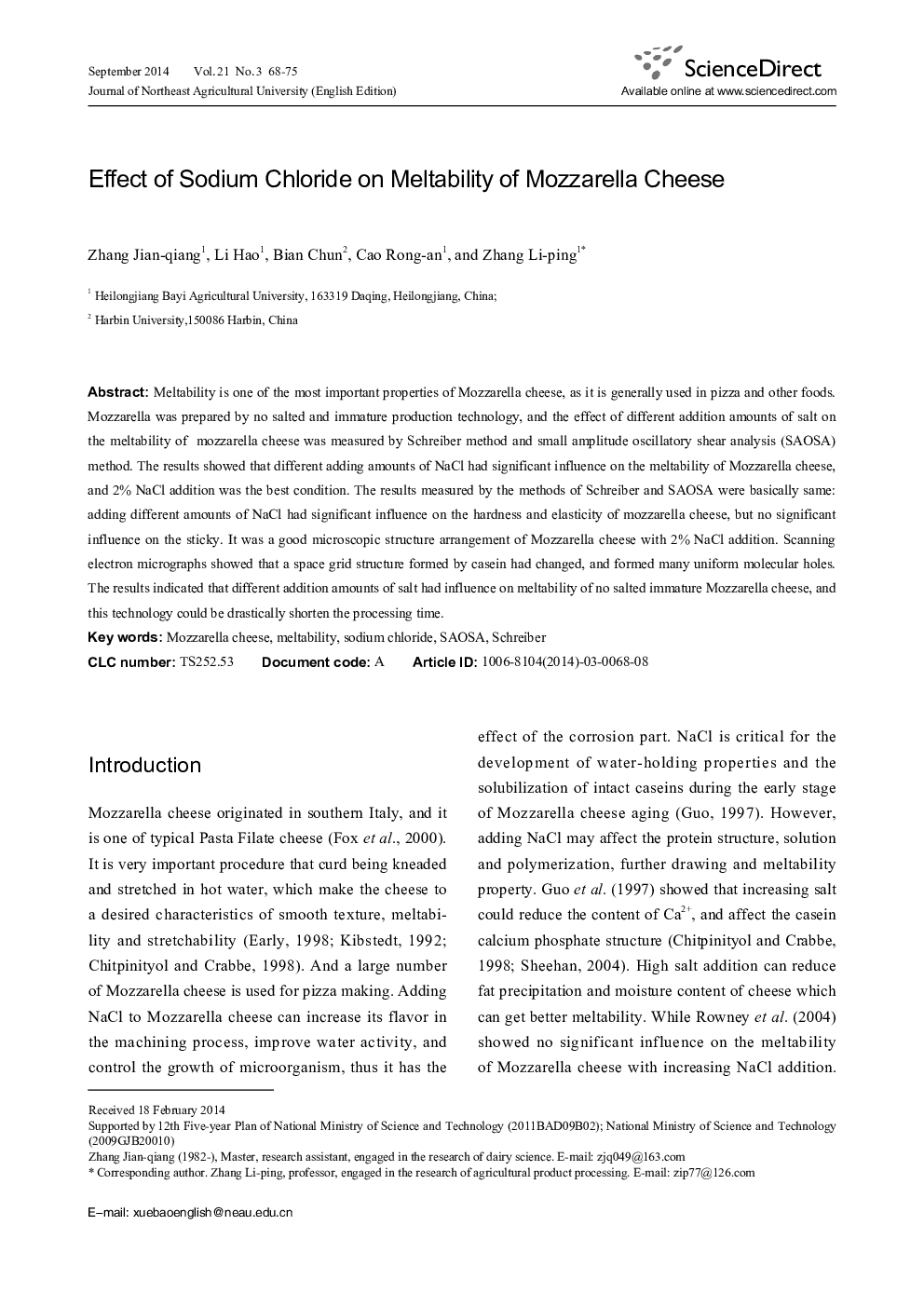| Article ID | Journal | Published Year | Pages | File Type |
|---|---|---|---|---|
| 4495385 | Journal of Northeast Agricultural University (English Edition) | 2014 | 8 Pages |
Meltability is one of the most important properties of Mozzarella cheese, as it is generally used in pizza and other foods. Mozzarella was prepared by no salted and immature production technology, and the effect of different addition amounts of salt on the meltability of mozzarella cheese was measured by Schreiber method and small amplitude oscillatory shear analysis (SAOSA) method. The results showed that different adding amounts of NaCl had significant influence on the meltability of Mozzarella cheese, and 2% NaCl addition was the best condition. The results measured by the methods of Schreiber and SAOSA were basically same: adding different amounts of NaCl had significant influence on the hardness and elasticity of mozzarella cheese, but no significant influence on the sticky. It was a good microscopic structure arrangement of Mozzarella cheese with 2% NaCl addition. Scanning electron micrographs showed that a space grid structure formed by casein had changed, and formed many uniform molecular holes. The results indicated that different addition amounts of salt had influence on meltability of no salted immature Mozzarella cheese, and this technology could be drastically shorten the processing time.
